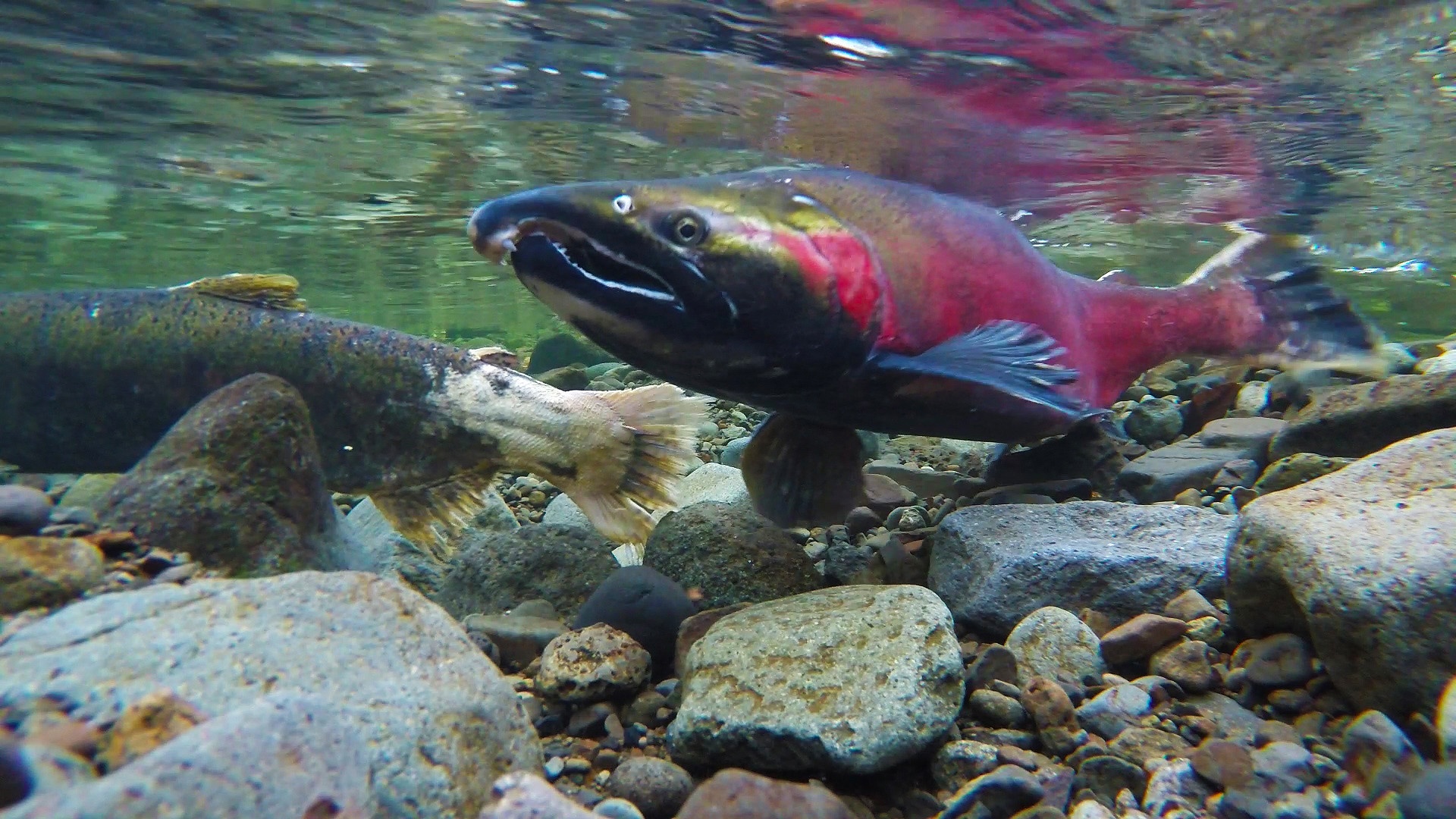We have much more to do and your continued support is needed now more than ever.
2022 Is the Year We Recover Salmon

It’s been more than two decades since we launched the fight to save the mighty salmon runs of the Columbia River Basin. We are far from gaining ground and reaching recovery goals.
Snake River salmon runs are sliding toward extinction — due to the negative impacts of the lower Snake River dams. And climate change is accelerating the crisis. It doesn’t have to end this way and since the early 2000s, the National Wildlife Federation, in coordination with other nonprofits, the state of Oregon, and the Nez Perce Tribe, has been leading the charge to ensure we don’t lose these iconic fish forever.
2022 is the year we must commit to urgent and meaningful action.
2022 is the year we recover salmon.
Here’s what’s at stake: Urgency. Extinction. Justice.
CODE RED: The crisis is urgent
Last spring, the Nez Perce sounded the alarm. According to the latest finding in the Nez Perce Tribe’s fish study wild spring Chinook salmon and steelhead populations in the Columbia and Snake River Basins are nearing a critical threshold. Almost 80% of Snake River Basin spring and summer chinook could be on the path to extinction in the next four years.
The negative impacts of the dams are gathering momentum. Diminished salmon runs continue to drop. Now climate change is making it worse. Wildfire, extreme heat waves and drought are all conspiring to decimate salmon runs. Salmon are running out of time. This means we are running out of time to save them — unless we act immediately.
Extinction is real — and forever
Columbia River salmon are in the grip of an extinction crisis. Salmon are not just a fish, but a keystone species, at the heart of a broad, but fragile ecological web.

Without salmon, Southern Resident orcas, which are also on the cusp of extinction, may starve. If we want to save orcas, we must save the salmon they feed on to thrive. Without orca or salmon, we lose a massive and treasured amount of Northwest wildlife and in turn, we lose a massive and treasured key to Northwest identity.
Justice is not negotiable
Our country is in the midst of a deep reckoning for historic injustice. Removing the lower Snake River dams is one of the most important steps we can take to begin to keep our promises to Tribes on salmon.
“America made a deal and promised that we would be able to fish forever. We can’t fish if there aren’t any salmon left.”
Confederated Tribes of the Umatilla Indian Reservation Youth Leadership Council in their letter to President Biden
The issue is simple. The failure to act is a violation of treaty rights — and worse. It’s a threat to the livelihoods of Tribal and Indigenous communities that have relied on the salmon of their homelands for time immemorial.
The Snake River dams destroyed traditional fishing sites and devastated salmon populations that Indigenous communities in the Northwest have depended on for millenia. The construction and continued operation of these dams violates the treaty fishing rights of Northwest Tribes.
The answer is simple: America must keep its promises. We must stand with the tribes and bring down the dams.
Let’s create a wildlife friendly future
Instead of extinction, we can recover the magnificent salmon runs of the Columbia River basin to benefit the wildlife and communities that depend on them.
A critical first step is to rethink clean energy. We have the solutions that allow for a truly clean energy mix that co-exists with salmon. With funding from Congress, we can replace the benefits that the dams provide — and strengthen the Northwest. With irrigation and transportation upgrades farmers who rely on the dams for watering crops and barging can get their products to market.
We have a once-in-a-generation opportunity
2021 was a groundbreaking year for these imperiled fish and the ecosystem, Tribal communities, and economies that depend on them. In early 2021, Rep. Mike Simpson (R-Idaho) proposed a visionary framework that will honor our obligations to Tribes, revitalize the agricultural sector, generate lower-cost clean energy, create good-paying jobs — and recover salmon runs in the Columbia River Basin.
The National Wildlife Federation has championed Rep. Simpson’s visionary proposal and has invested in building the political momentum needed to move it forward. We are gaining ground and now have — for the very first time — an actionable commitment from leaders in three states: Washington, Oregon, and Idaho. They hail from both parties and they join a majority of both Republican and Democrat voters in Washington (where the dams are located) that support the removal of the lower Snake dams.
Most important: The Presidential Administration announced its commitment to charting a path toward ending the Columbia River Basin “salmon and dams” conflict. It’s an exciting time with the potential for real solutions now with bipartisan, regionwide, and executive branch commitment.
Let’s make a resolution – and stick to it!
Salmon are in trouble. This means we are in trouble. Inaction is the ally of extinction.
Our elected leaders have vowed they would not let extinction happen on their watch. It’s up to us to ensure they keep their promises. 2022 is the year we recover salmon.





















